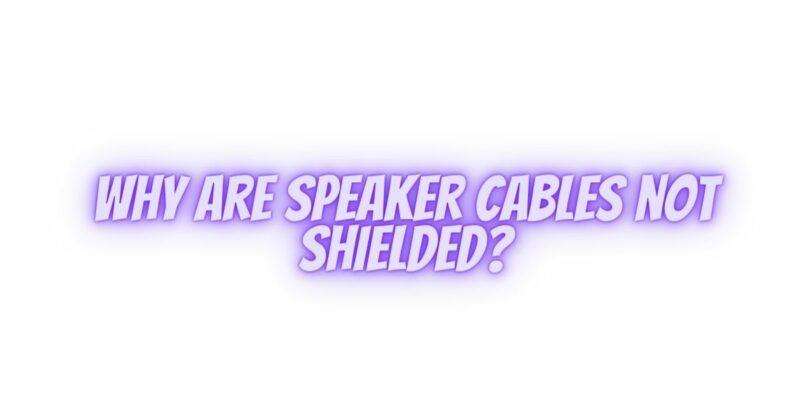When exploring the world of audio cables, you’ll quickly notice that speaker cables, unlike many other audio cables, are not shielded. This may raise questions about why speaker cables lack shielding and whether it affects audio quality or performance. In this article, we’ll delve into the reasons behind the absence of shielding in speaker cables and how it impacts their function.
What Are Speaker Cables?
Speaker cables are specialized audio cables designed to carry amplified audio signals from an amplifier or receiver to loudspeakers. These cables typically consist of two conductors enclosed in insulation, often with color-coded markings for ease of identification. Speaker cables come in various gauges and lengths to suit different audio setups and requirements.
Shielding in Audio Cables
Shielding in audio cables serves the primary purpose of protecting the signal from external electromagnetic interference (EMI) and radio frequency interference (RFI). This interference can introduce unwanted noise into the audio signal, potentially degrading audio quality.
Common audio cables that employ shielding include:
- Instrument Cables: Used for electric guitars and other musical instruments, instrument cables are typically shielded to prevent interference from nearby electronic devices.
- Microphone Cables: Microphone cables, also known as XLR cables, are shielded to ensure clean and noise-free transmission of audio signals from microphones to mixing consoles or amplifiers.
- Interconnect Cables: Interconnect cables, such as RCA or balanced XLR cables, often feature shielding to maintain signal integrity when connecting audio components like CD players, turntables, and amplifiers.
Why Speaker Cables Are Not Shielded
Speaker cables differ from the aforementioned cables in several key ways, and these distinctions explain why they are typically not shielded:
- Signal Strength: Speaker cables carry high-power, amplified audio signals from the amplifier to the speakers. These signals are significantly stronger than the low-level signals found in instrument cables, microphone cables, or interconnect cables. As a result, they are less susceptible to interference and noise pickup.
- Short Cable Runs: Speaker cables are typically used for relatively short cable runs between amplifiers and speakers, minimizing the exposure to external interference. In contrast, other shielded cables like microphone cables may run longer distances and benefit from shielding.
- Cost-Effectiveness: Shielding adds complexity and cost to cable manufacturing. Since speaker cables are intended for short, high-power runs and do not require shielding for their typical applications, omitting shielding helps keep their cost reasonable.
- Bulkiness: Shielding can make cables thicker and less flexible. For speaker cables, flexibility and ease of installation are often prioritized, especially in home audio setups.
When Is Shielding Needed for Speaker Cables?
While most speaker cables are not shielded, there may be situations where shielding becomes necessary:
- Long Cable Runs: In scenarios where speaker cable runs are exceptionally long, the increased length may make them more susceptible to external interference. In such cases, using shielded speaker cables or installing them in a way that minimizes exposure to interference sources may be advisable.
- High-Interference Environments: In environments with high levels of electromagnetic interference, such as professional audio setups near industrial equipment or radio transmitters, shielded speaker cables can help ensure clean audio signals.
Conclusion
Speaker cables are not shielded by design, primarily because they carry high-power, amplified audio signals over short distances, making them less susceptible to interference. While shielding can be beneficial in specific scenarios, for most home audio setups and typical applications, unshielded speaker cables perform admirably and offer a cost-effective and practical solution for connecting amplifiers to loudspeakers.

